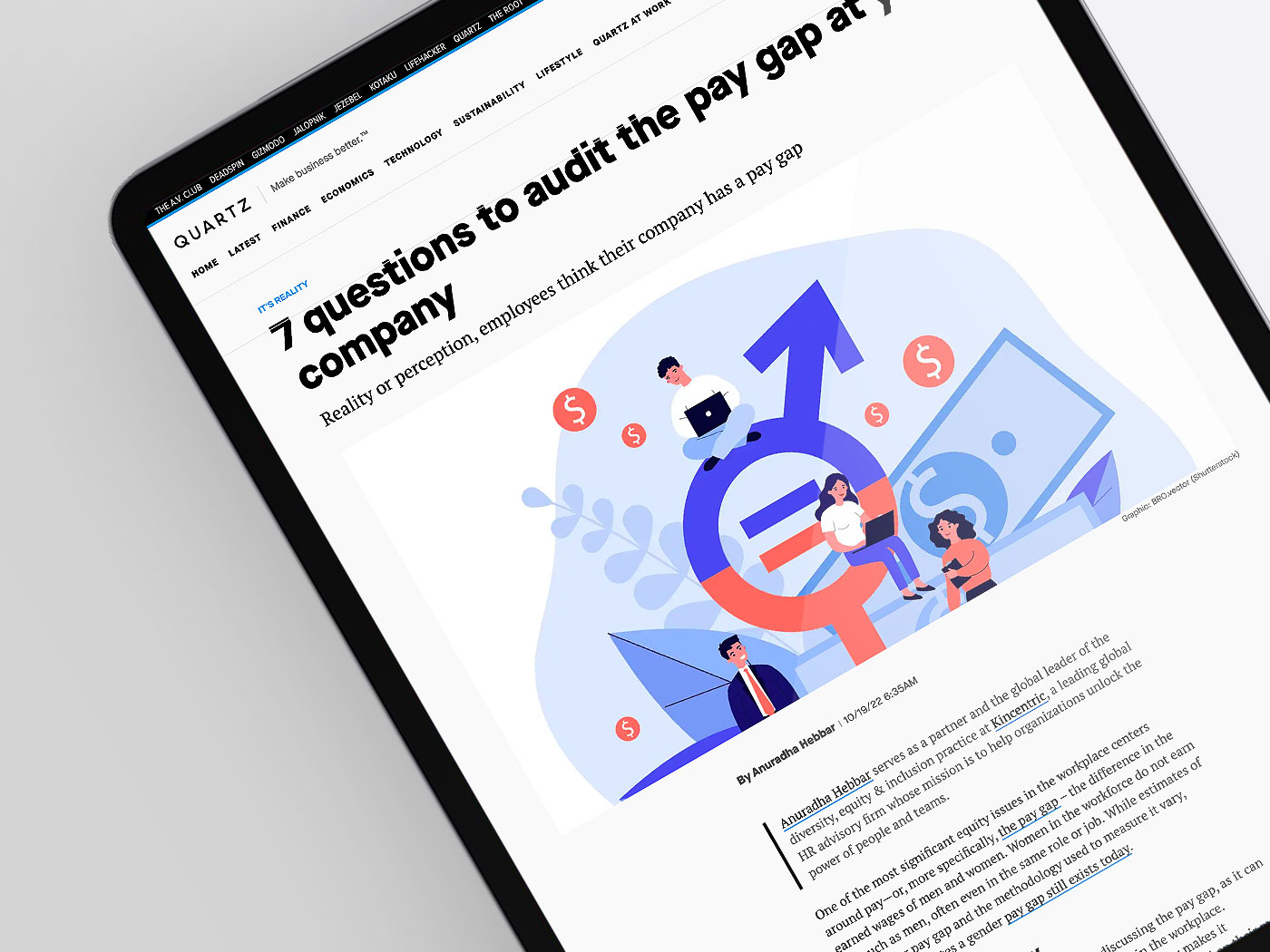
This article was first published by Quartz. To view the original article, click here.
Anuradha Hebbar serves as a partner and the global leader of the diversity, equity & inclusion practice at Kincentric, a leading global HR advisory firm whose mission is to help organizations unlock the power of people and teams.
One of the most significant equity issues in the workplace centers around pay—or, more specifically, the pay gap – the difference in the earned wages of men and women. Women in the workforce do not earn as much as men, often even in the same role or job. While estimates of the gender pay gap and the methodology used to measure it vary, research indicates a gender pay gap still exists today.
Perception plays an integral role when discussing the pay gap, as it can help shed light on the experience of women in the workplace. Unfortunately, the lack of transparency around pay makes it challenging for women to confirm if they are paid less than their male colleagues. In the absence of facts and data, it’s also challenging for companies to understand how their organizational processes, policies, and reward systems are perceived. Knowing that experiences of fairness result in perceived equity, we’ve been working to understand how this relates to women’s perceptions of their pay and rewards.
Kincentric’s research has shown gaps in how women and men perceive their pay, specifically in whether their performance impacts their compensation and whether they believe they’re paid fairly for their contributions.
Arguably, it appears that the perception of pay fairness is just as important as the reality of it, particularly when perceptions around fair pay shape the attitude, productivity, and engagement of women in the workplace.
Companies can leverage their internal data to understand if and where there are pay gaps—overall, in similar roles, or at similar levels—and uncover misperceptions around pay equity. Companies can mitigate perceptions of a gender pay gap by building internal capabilities that help them answer yes to the following questions:
Inclusion happens when people can fully use their talents to contribute and feel valued for those contributions. Equitable policies are the foundation of ensuring everyone can advance and thrive. Organizations need to utilize an evidence-based, holistic approach to fully understand the issues negatively impacting the experience of women in the workplace. Keep in mind that the gender pay gap—whether real or perceived—is often indicative of potentially more significant systemic issues in the workplace that can lead women to feel overlooked, undervalued, and underpaid. While closing the pay gap is a critical step, the more comprehensive solution is intentionally creating an inclusive culture in which women perceive their contributions and talents are respected and appreciated.
Want the latest insights delivered straight to your mailbox?